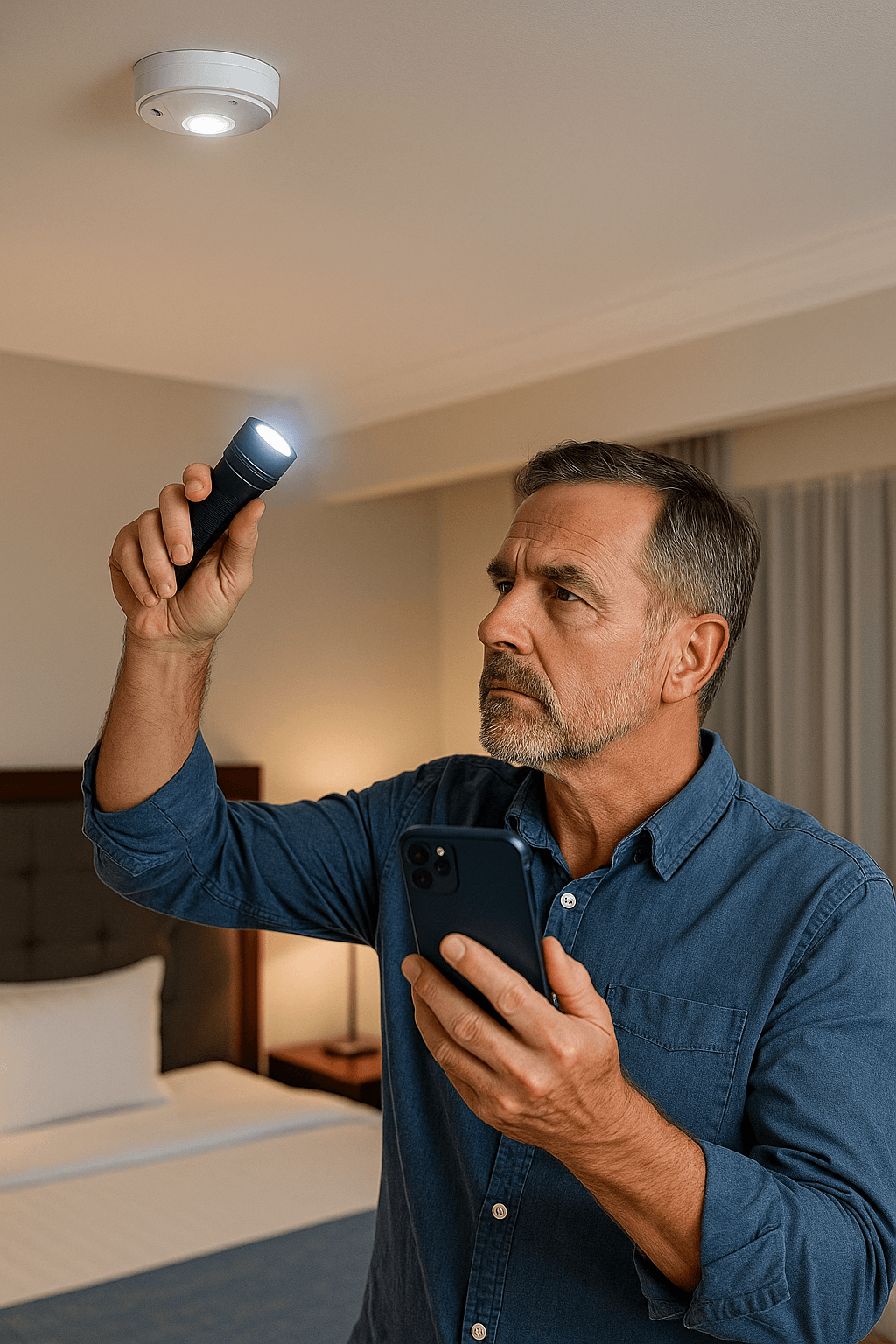Detecting Hidden Cameras – or Using Them Legally: What Tenants and Landlords Should Know
Increasingly, travelers report discovering hidden cameras in vacation rentals or hotel rooms. But there’s another side: owners of vacation rentals often face the question of how to protect their property – for example, during longer periods of vacancy – without violating data protection or personal rights.
In this article, we examine both sides:
How can I, as a guest, detect a spy camera – and how can I, as an owner, operate a camera system legally?
1. Why Are There Cameras in Private Accommodations at All?
Tenants fear espionage, while landlords often want to protect against theft, vandalism, or unauthorized use. Systems like Blink, Ring, or Reolink make it easy to monitor apartments remotely – sometimes even with sound and motion detection.
However: Not everything that is technically possible is legally allowed.
2. How to Detect Hidden Cameras – as a Tenant or Guest
When you’re traveling, remember: Keep your eyes open in your accommodation!
Many mini cameras are hardly visible today – but with the right tips, they can often be detected.
a) Check Wi-Fi Networks
Most surveillance cameras connect to Wi-Fi. Using apps like:
- Fing (iOS/Android)
- Engelmann Forensic System (for network monitoring)
you can see which devices are on the network. Unknown or generic names like “IPCam” or “Camera_xx” should make you suspicious.
b) Detect Lenses with Light
In a darkened room, many lenses reflect when exposed to a direct light source:
- Darken the room
- Hold a flashlight parallel to eye level
- Slowly shine light into mirrors, smoke detectors, or devices
A reflection – similar to a cat’s eye – can reveal a lens.
c) Make Infrared Light Visible
Many cameras use IR LEDs for night vision. The front camera of your smartphone can often make IR light visible. In a dark room, active IR LEDs glow slightly purple or white.
d) Use Bluetooth Scanner
Some cameras use Bluetooth for data transmission. Apps like BLE Scanner show devices within range. Unknown or unnamed devices are potentially suspicious.
e) Check Hidden Places
Typical hiding spots:
- Smoke detectors (often with a view of the bed)
- Alarm clocks, speakers, USB chargers
- Picture frames, plants, lamps
- Decorative objects with conspicuous holes
Real Case: Camera in Power Adapter
In 2023, a guest in Paris discovered a camera in the USB charger at the bedside. When trying to use his own cable, he noticed the unusual weight. Inside, he found a working camera with an SD card.
3. What to Do if You Discover a Camera?
- Don’t manipulate or cover it before securing evidence
- Take photos and videos for documentation
- If possible: disconnect the camera from power or log it out of the Wi-Fi
- Leave the accommodation if you feel uncomfortable
- Contact the platform operator (e.g., Airbnb)
- If you suspect illegal surveillance: contact the police
- Don’t damage the camera – this can be legally problematic
4. Landlord’s Perspective: Using Cameras Legally
Yes, you may protect your property – but not spy on your guests.
If you protect your apartment with Blink, Ring, or Reolink cameras, for example, you must follow these basic rules:
a) Only Monitor Public Areas
Cameras may film the entrance area or the front door, for example – but not the interior once it is rented out.
b) Provide Clear Notices
Indicate in your house rules, in the listing, or on-site:
“This accommodation is video-monitored in the entrance area.”
c) Deactivate cameras in interior spaces when renting
If you have installed cameras in the living room or hallway, you must visibly turn them off or physically cover them when guests are present. A small icon in the app is not sufficient.
d) No audio, no hidden recording
Audio recordings are more strictly regulated in many countries than video. Even if your camera records quietly and invisibly – this is generally prohibited in rented spaces.
How to do this with systems like Blink?
Blink cameras can be, for example:
- deactivated in the app
- set with schedules
- limited to motion detection
- marked as active or inactive by LED light (recommended!)
A best practice would be, for example:
“During the rental period, all indoor cameras are switched off. The camera at the entrance remains active and is used exclusively for access control.”
5. What Does the Law Say? (Note)
Legal notice: This article is for general information purposes only and does not replace legal advice. The legal situation regarding surveillance and data protection can change continuously. New court rulings, national special regulations, or EU directives can influence the legal assessment. For binding assessments, please consult a qualified legal professional.
6. Conclusion: Use Technology – But with Moderation
Whether tenant or owner: Modern camera systems can provide security – but they must not violate privacy.
- Those who know as guests how to detect hidden cameras actively protect themselves.
- Those who act responsibly as landlords protect their property and remain legally on the safe side.
With tools like the Engelmann Forensic System, clever procedures, and the right amount of attention, you are well-equipped – whether as a tenant or landlord.


